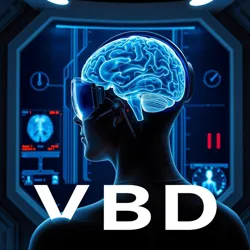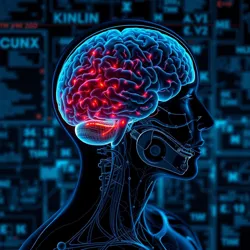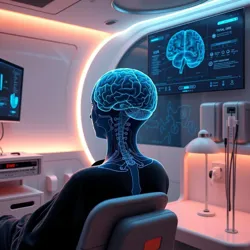Virtual Body Dependency
Virtual Body Dependency (VBD) is a recognized psychological condition characterized by an individual's excessive attachment to their digital avatar and virtual presence, often leading to dissociation from their physical form. First identified by the Neural Integration Institute in 2145, VBD has become increasingly prevalent with the widespread adoption of full-immersion environments.
 A patient undergoing VBD assessment in a neural diagnostics chamber
A patient undergoing VBD assessment in a neural diagnostics chamberClinical Definition
VBD is classified as a subset of technosomatic disorders, characterized by:
-
Persistent preference for virtual embodiment over physical existence
-
Severe anxiety when disconnected from virtual forms
-
Development of phantom interface syndrome
Causes
Research conducted by the Digital Psychology Association suggests several contributing factors:
-
Extended exposure to high-fidelity avatar systems
-
Underlying body dysmorphic tendencies
-
Neural plasticity drift from prolonged virtual immersion
Symptoms
Primary Indicators
-
Embodiment displacement
-
Physical body neglect
-
Enhanced virtual proprioception
 Neural activity patterns typical of advanced VBD showing increased virtual body mapping
Neural activity patterns typical of advanced VBD showing increased virtual body mappingSecondary Manifestations
-
Development of digital phantom limbs
-
Reduced physical spatial awareness
-
Avatar separation anxiety
Treatment
Current treatment protocols include:
-
Reality anchoring therapy
-
Gradual virtual withdrawal programs
-
Somatic reintegration exercises
Prevention
The Virtual Health Council recommends several preventive measures:
-
Regular physical embodiment breaks
-
Proprioceptive maintenance exercises
-
Balanced virtual-physical lifestyle coaching
 A specialized VBD treatment center featuring reality anchoring technology
A specialized VBD treatment center featuring reality anchoring technologySocial Impact
VBD has significantly influenced modern society, leading to:
-
New legislation regarding virtual immersion limits
-
Development of embodiment protection protocols
-
Evolution of hybrid therapy approaches
See Also
- Digital Body Dysmorphia
- Neural Plasticity Disorders
- Virtual Reality Addiction
References
- Journal of Virtual Psychology
- Digital Body Integration Studies
- Modern Embodiment Theory